A self-guided walk through the medieval lanes amongst history and intrigue
The Cathedral City of Canterbury in the heart of Kent is perfect for a day trip of culture. It’s straightforward to stroll around and enjoy all the city sights during your one-day visit. However, I’m sure you’ll struggle to pull yourselves away from the charming boutiques, quaint tea shops and the alluring old English pubs.
Canterbury has something for everyone
Canterbury is only around an hour from central London by train. Once you step into the ancient city centre, you’ll feel like you are a world away. Surrounded by timber-framed dwellings, tiny cobble-stoned lanes and tales of Chaucer will be echoing through your thoughts while visiting the beautiful UNESCO Cathedral.
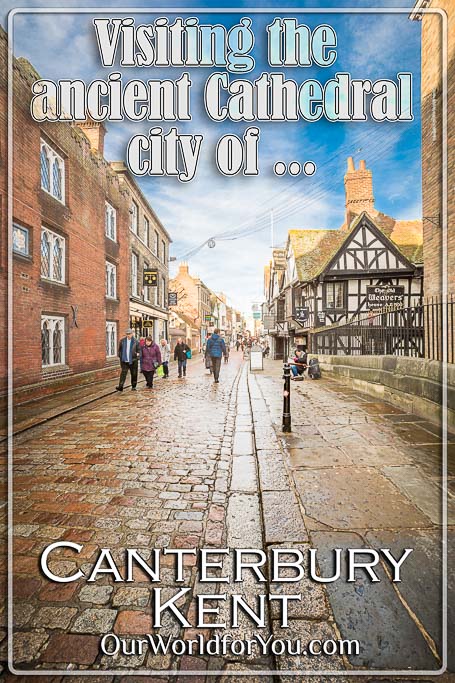
Where is Canterbury
How to get to Canterbury
- By Train
You can catch a train from London St Pancras to Canterbury West Station, which takes around 1 hour.
- By Car
Canterbury is around 8 miles (12.8km) off Junction 7 of the M2 motorway. Parking: there are a few car parks in and around the city; however, they can be expensive.
Our home county of Kent
‘The Garden of England’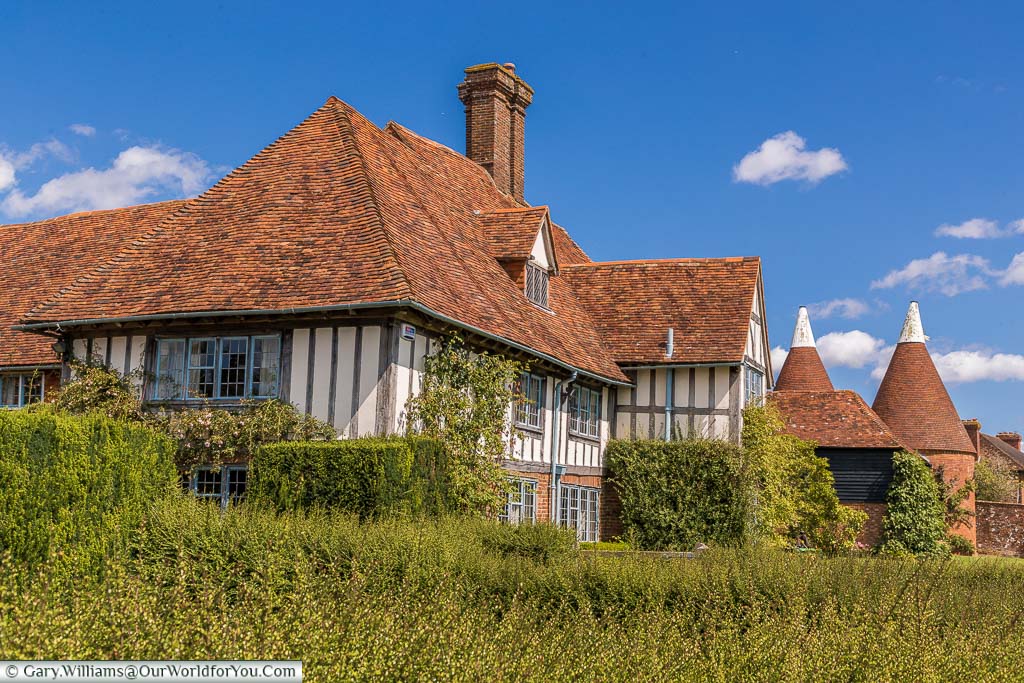
Centuries of history can be found within the smallest of villages, all throughout the Pilgrim’s Way winding through Canterbury and along the old Roman road of Watling Street.
Canterbury is only around 30 miles (50 km) from us, so we may appear slightly biased; however, there is a good reason for this, Canterbury is delightful.
A self-guided walk of Canterbury
A circular routeIf your inquisitive mind lures you off of the tour for any reason, don’t worry, you’ll soon find your way back; that’s all part of the fun.
The self-guided walk is a circular tour, so you can start it wherever you wish.
Exploring Canterbury
The Westgate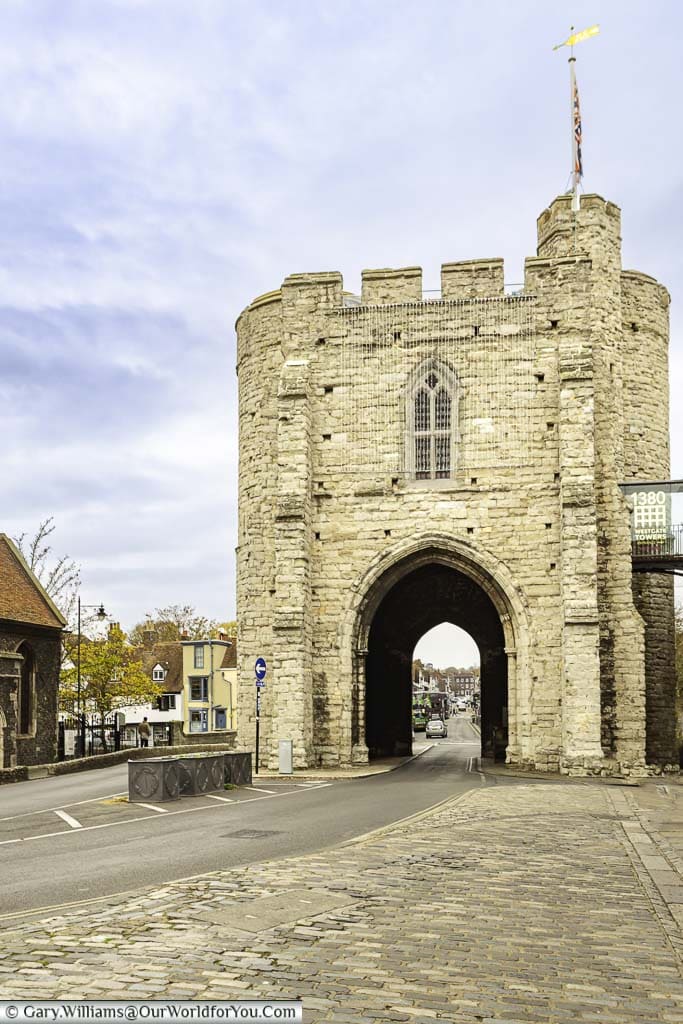
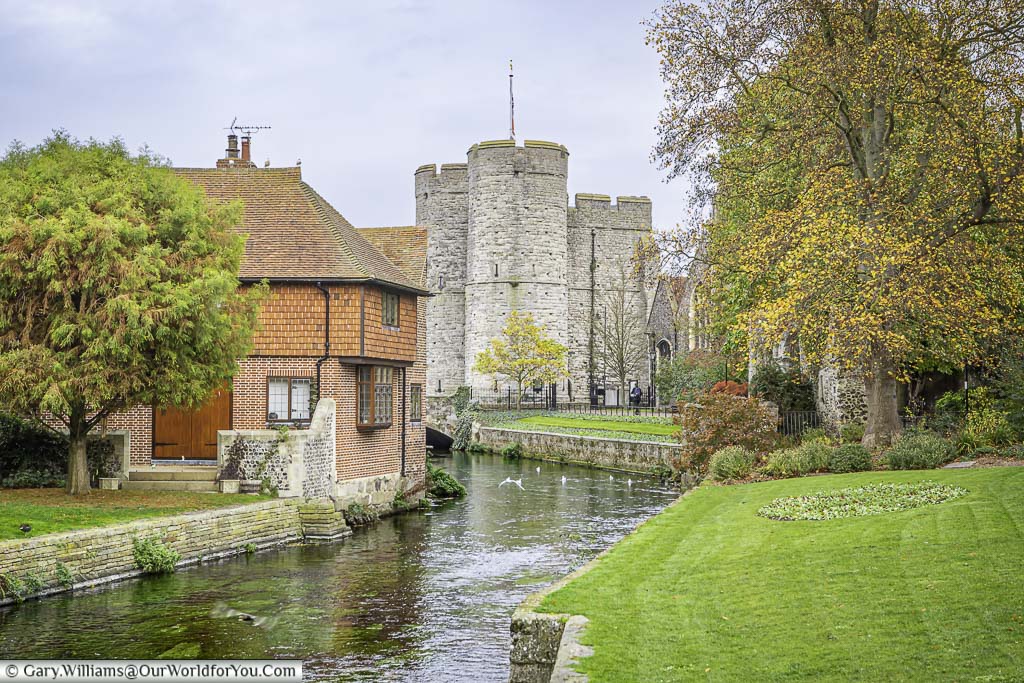
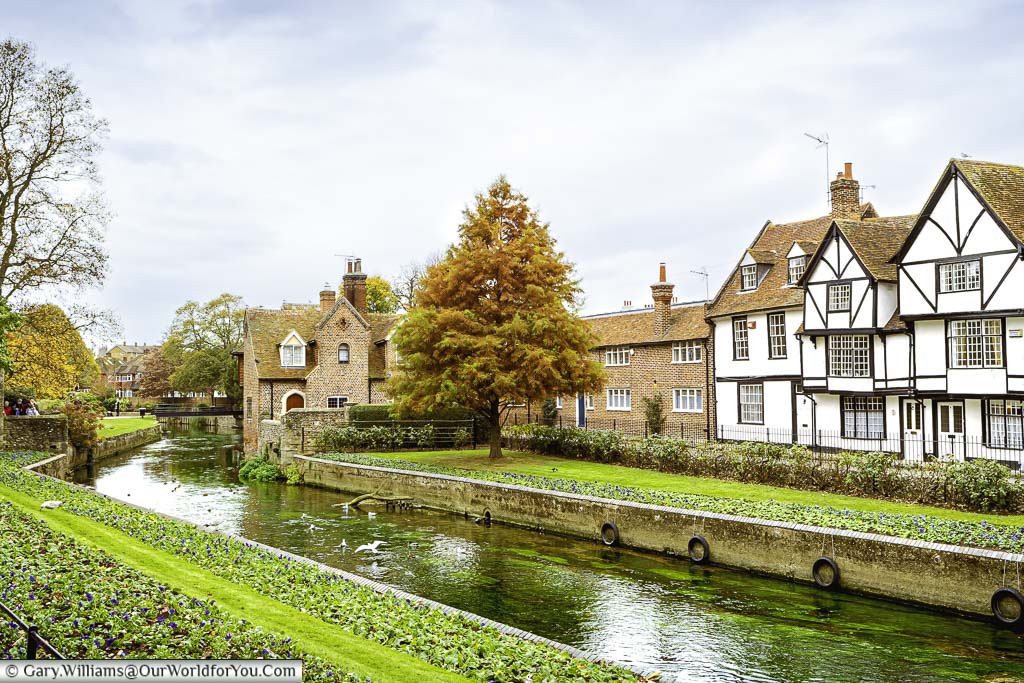
Discovering the old Roman Road of Watling Street
It all started in DoverWalking through Westgate Gardens, you'll also stumble upon a section of the pathway, which was once of the old Roman Road, later known as Watling Street.
A plaque has been laid over the route that early Britons would have used regularly. This Roman Road connected London to Dover and many other places too!
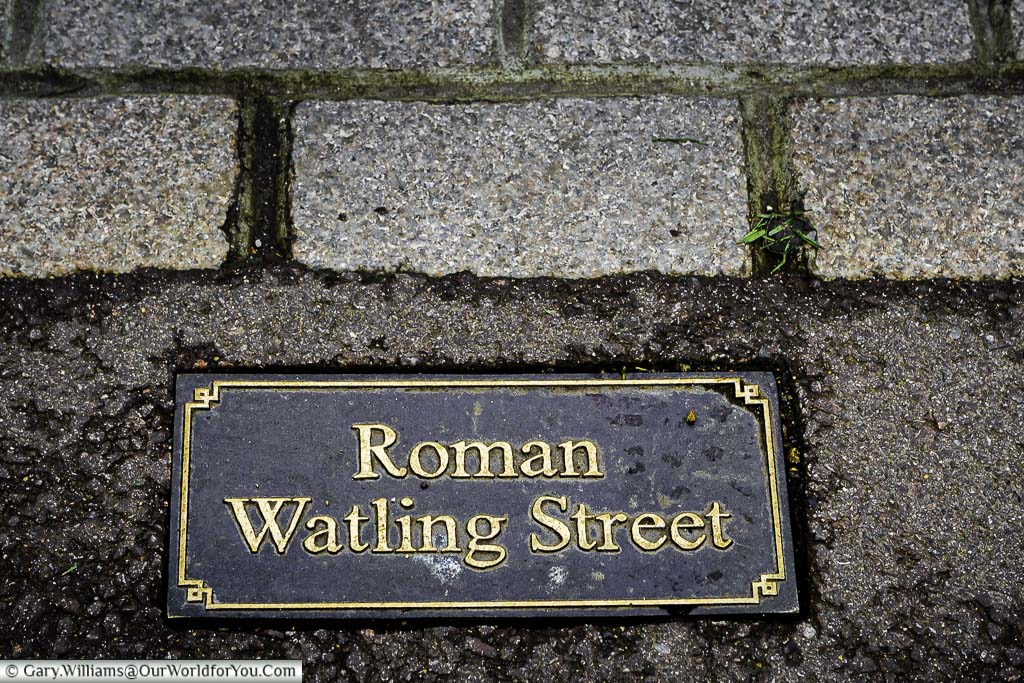
If you're intrigued by Kent's weird and wonderful history, or all unusual stories around the county, then take a peek at "Kent's Strangest Tales".
You won't be able to put it down, you can pick it up for your Kindle or in good old paperback.
William the Conqueror
The Duke of NormandyFollowing the route, and you’ll arrive at Canterbury Castle.
The Norman castle was originally built of wood on William the Conqueror's orders and constructed in a motte-and-bailey style.
Canterbury Castle was then rebuilt in the early 12th century of stone during the reign of Henry I. Along with Canterbury Castle, two additional Royal Castles were built in Kent, Rochester Castle and Dover Castle. Both fortresses stand as magnificent examples of British history and are lovingly maintained by English Heritage.
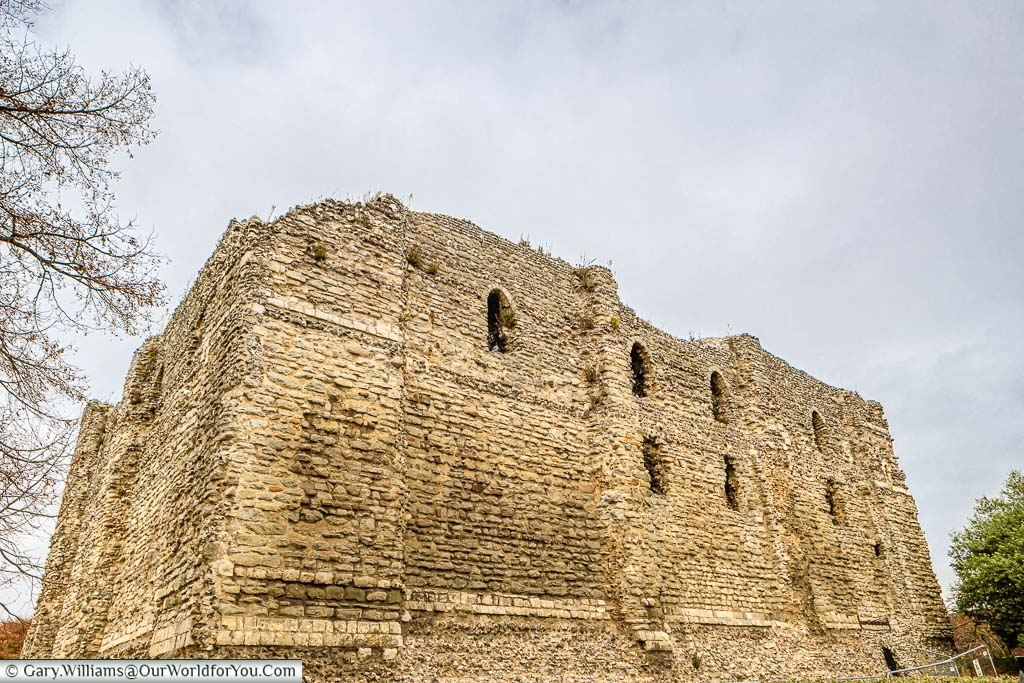
Off to Dane John Gardens
Through the lanes of CanterburyFrom Canterbury Castle, stroll along Castle Street and then turn right into Castle Row. There are some delightful old, terraced houses all along here. And no stopping in the Shepherd Neame, White Hart Inn along the way, I know it’s tempting.
Continue along Castle Row until you come to Don Jon House. This is where another of Canterbury’s old city gates would have once stood named ‘Wincheap Gate’.
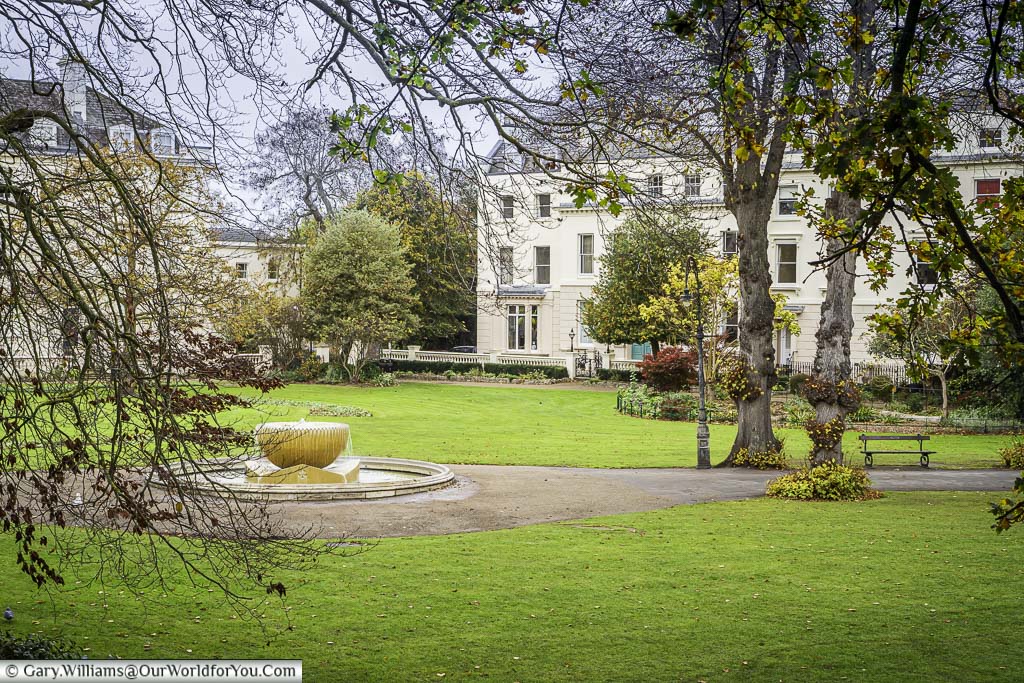
Directly opposite is Dane John Gardens' entrance and where a sizeable section of Canterbury’s ancient city walls still remains.
Allow some time to visit the gardens, stroll up and around the historic walls and buttresses. Here you’ll notice a large mound in the park. This was once a former Roman cemetery and burial mound.
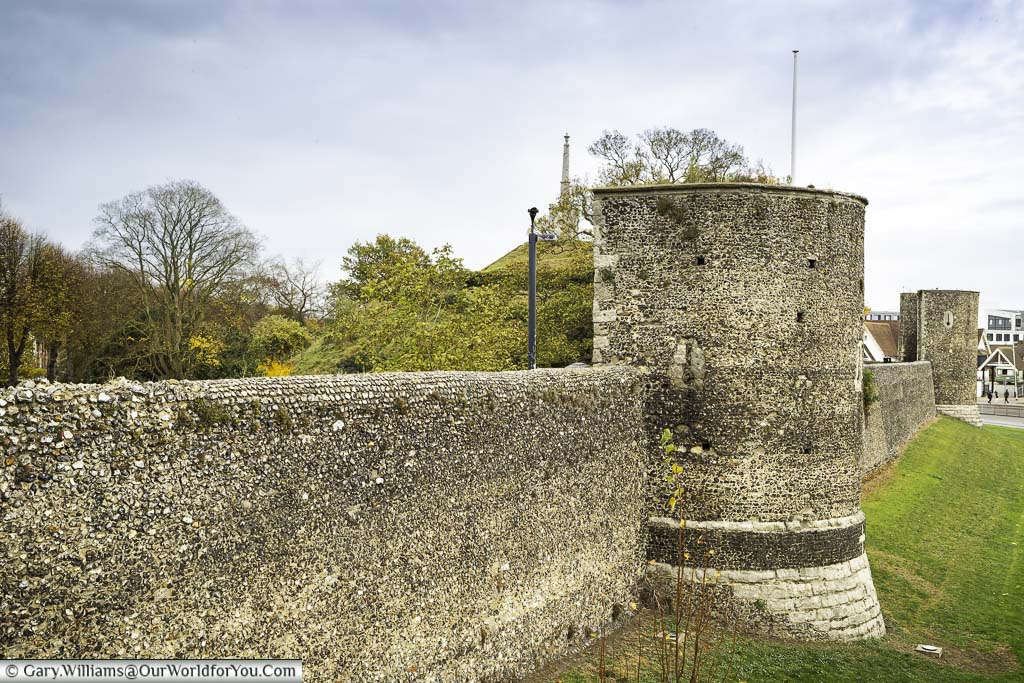
Watling Street, onward to London
Stepping in the tracks of pilgrims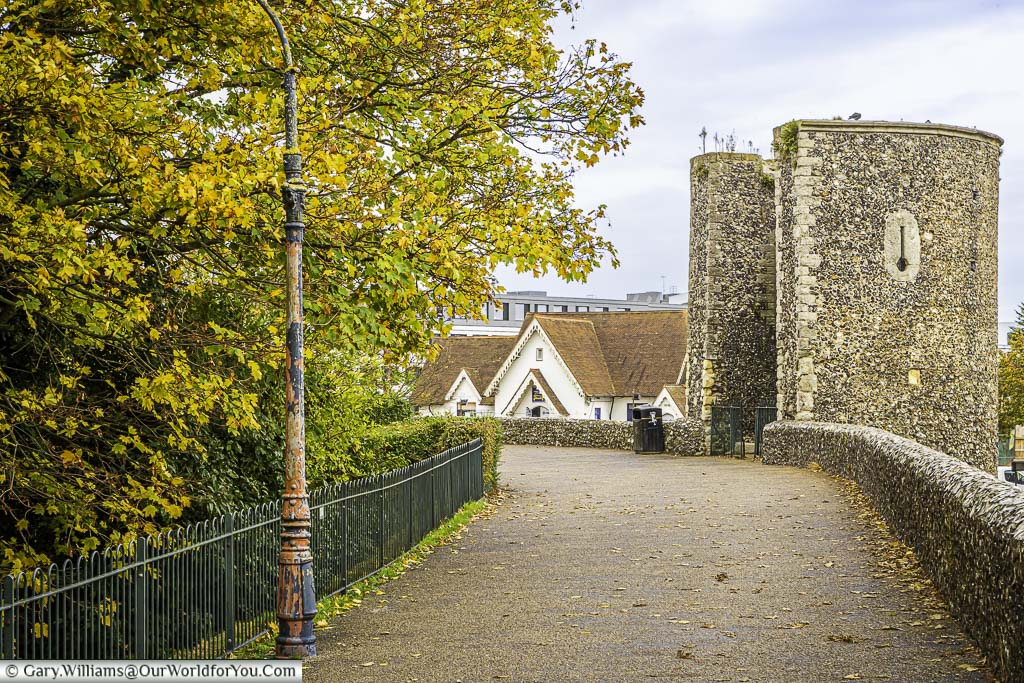
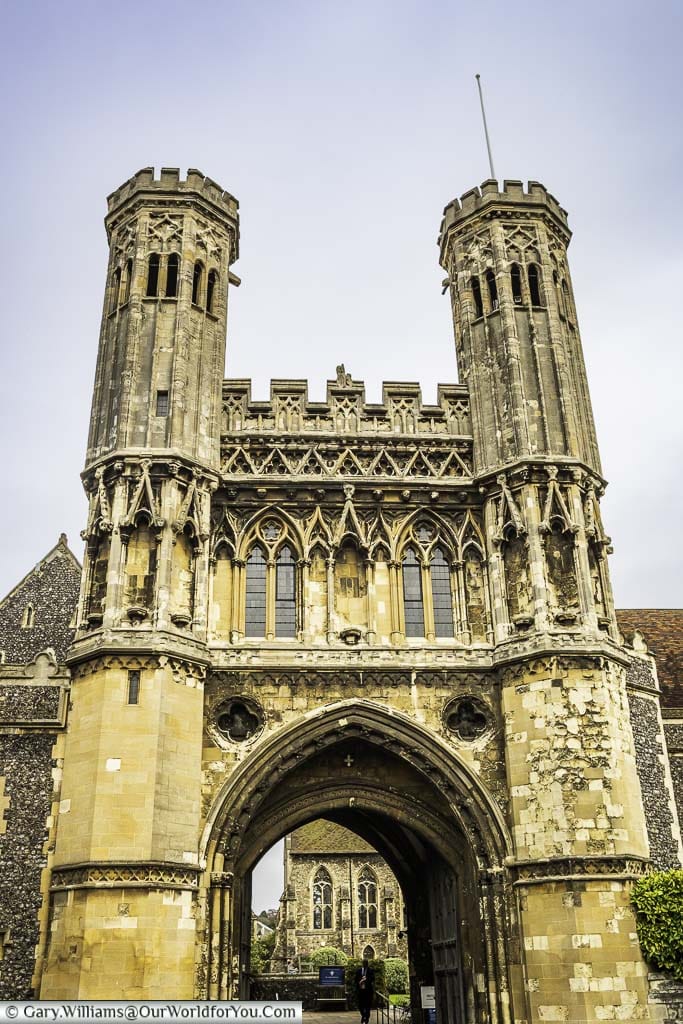

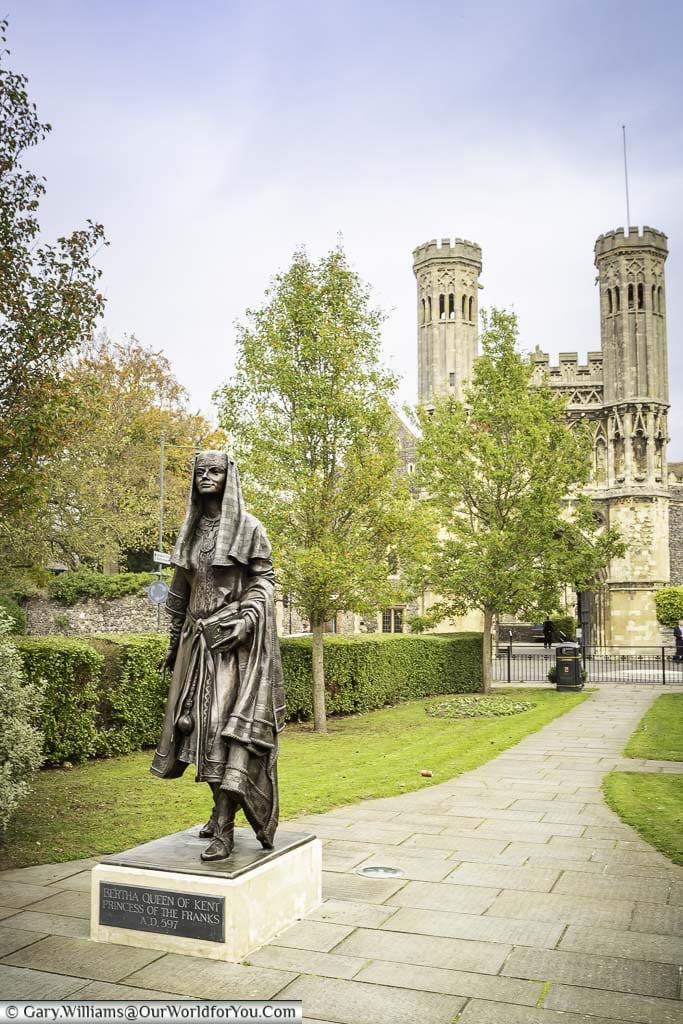
Map, guides and more
If you have based yourself in Canterbury, there's plenty to discover outside the city. There is the Crab and Winkle route to Whitstable, plus many more route perfect for a hike or to cycle. You'll want the Map of Canterbury & the Isle of Thanet to explore further.
Alternatively, why not purchase and download the OS Maps App, which covers all of Great Britain.
Buttermarket, here we come
With its cute timber-framed shops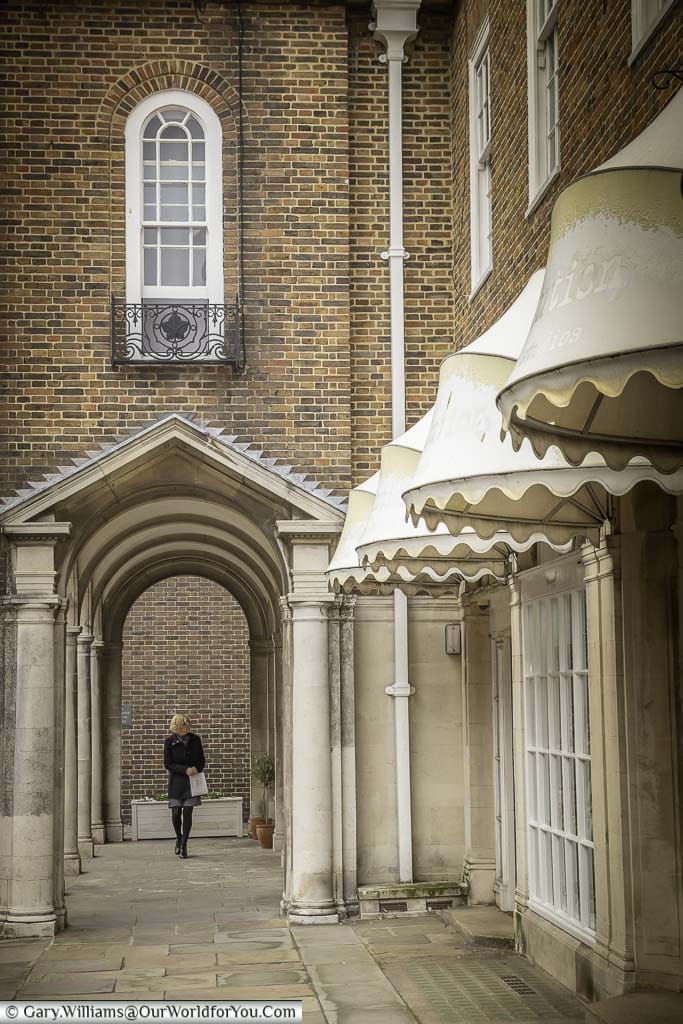
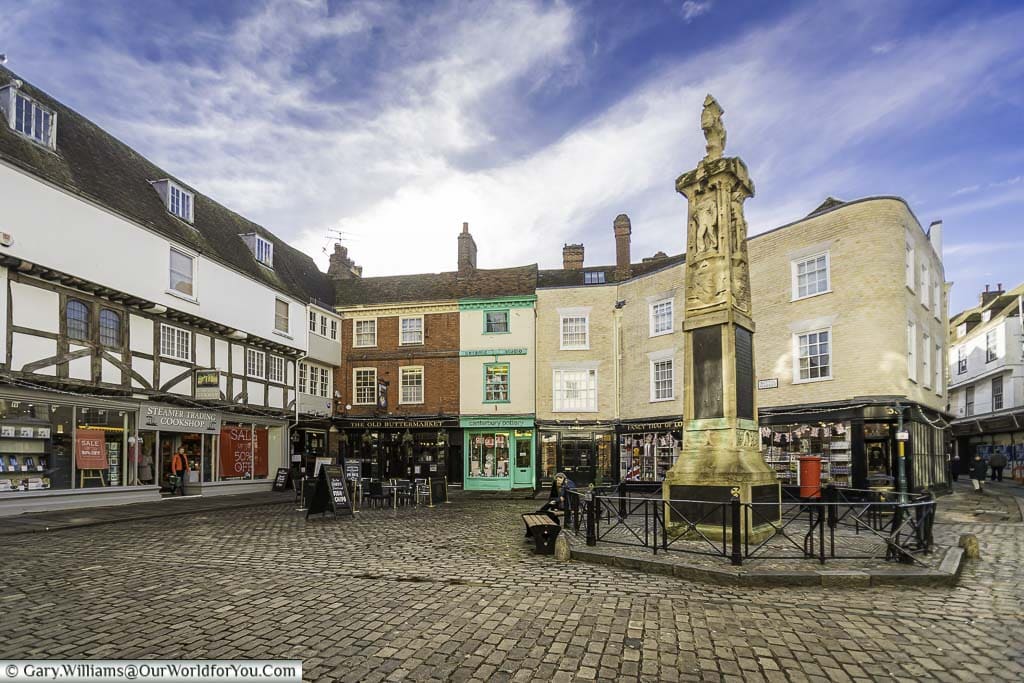
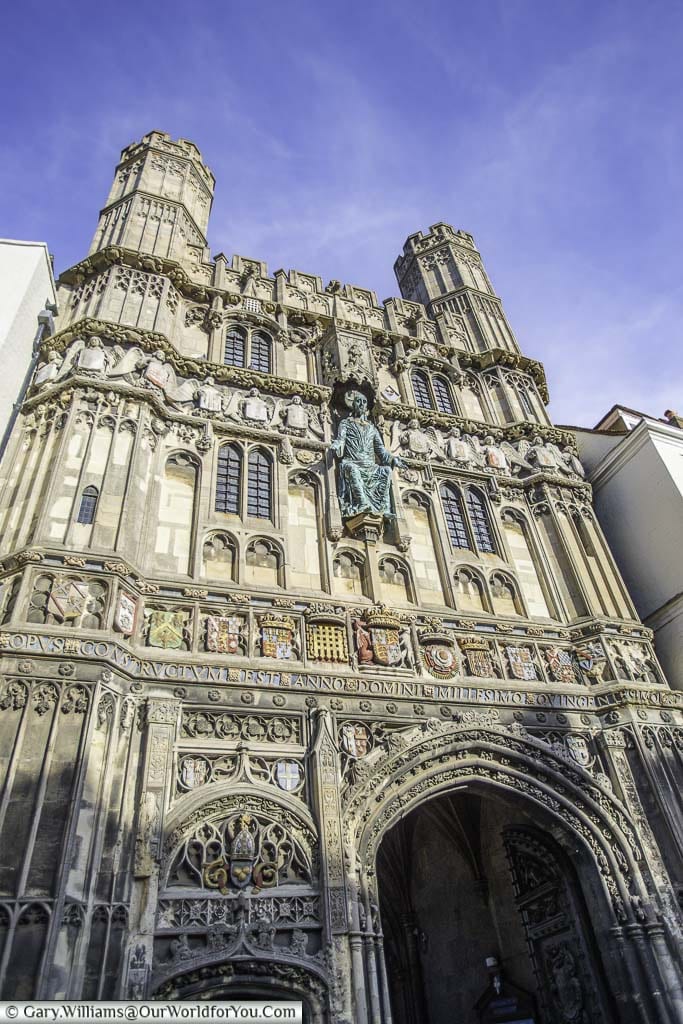
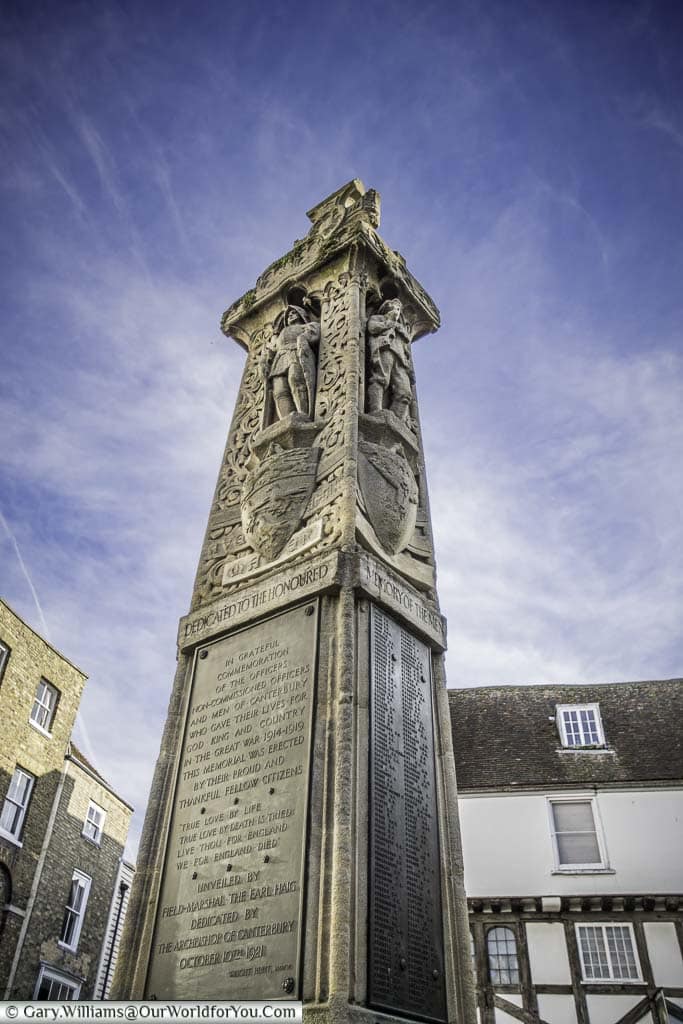
Where to stay in Canterbury
Murder within Canterbury Cathedral
Thomas Becket met his end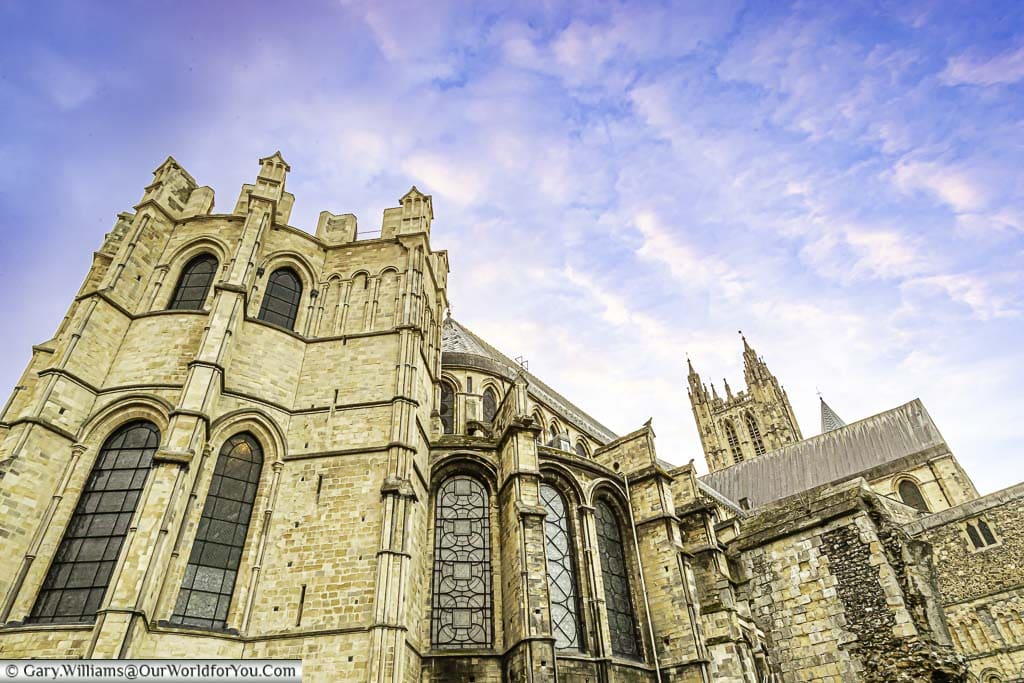
Canterbury Cathedral was founded in 597AD, although rebuilt in 1077. The Cathedral is renowned for pilgrims visiting the shrine of Thomas Becket.
Thomas Becket was murdered in the Cathedral by four of King Henry II’s Knights in 1170. A poignant sculpture marks the spot where the Archbishop was killed.
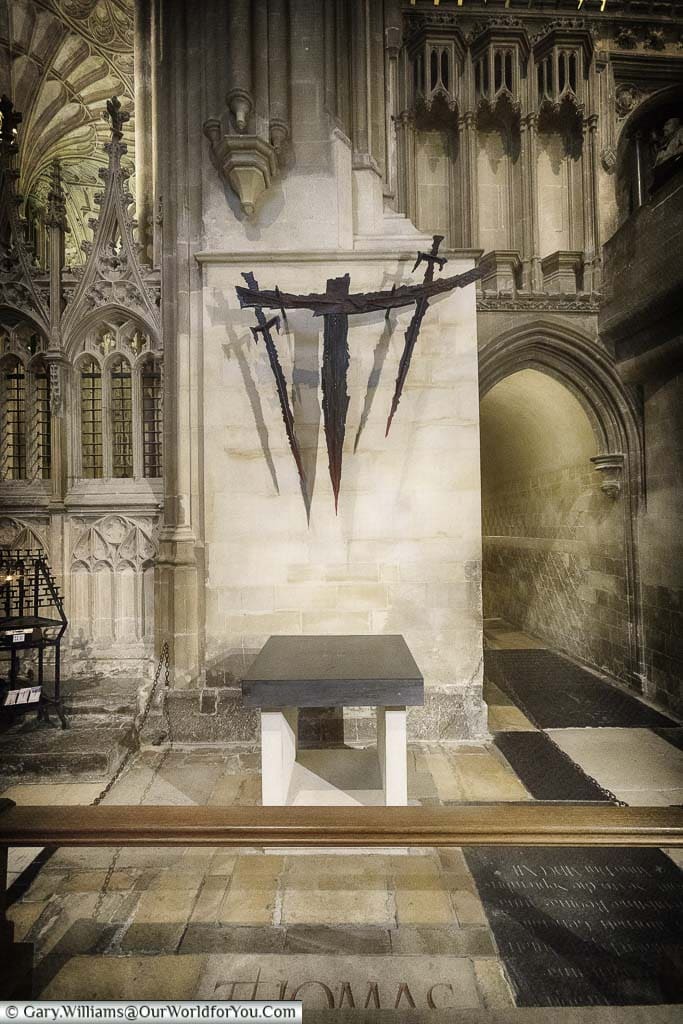
It was during the 14th century that the English poet and author Geoffrey Chaucer wrote his Canterbury Tales. Chaucer produced 24 fascinating stories of pilgrim’s lives and their journeys to Thomas Becket's shrine in Canterbury Cathedral.
Geoffrey Chaucer is interred in Poet’s Corner at Westminster Abbey, London.
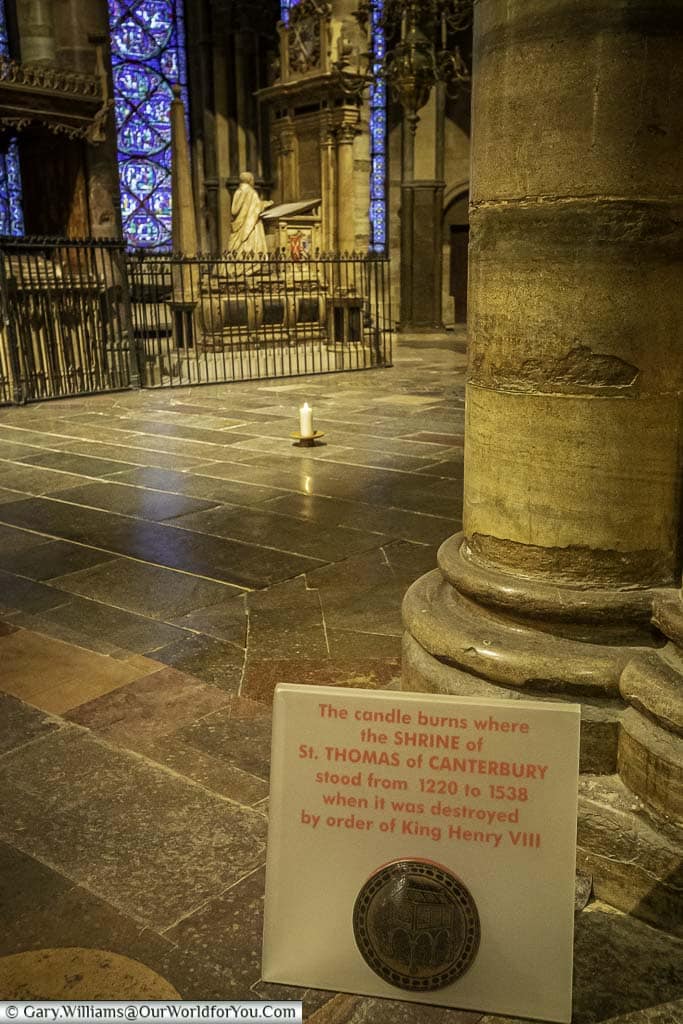

Did you know?
The King’s School, Canterbury
The world’s oldest school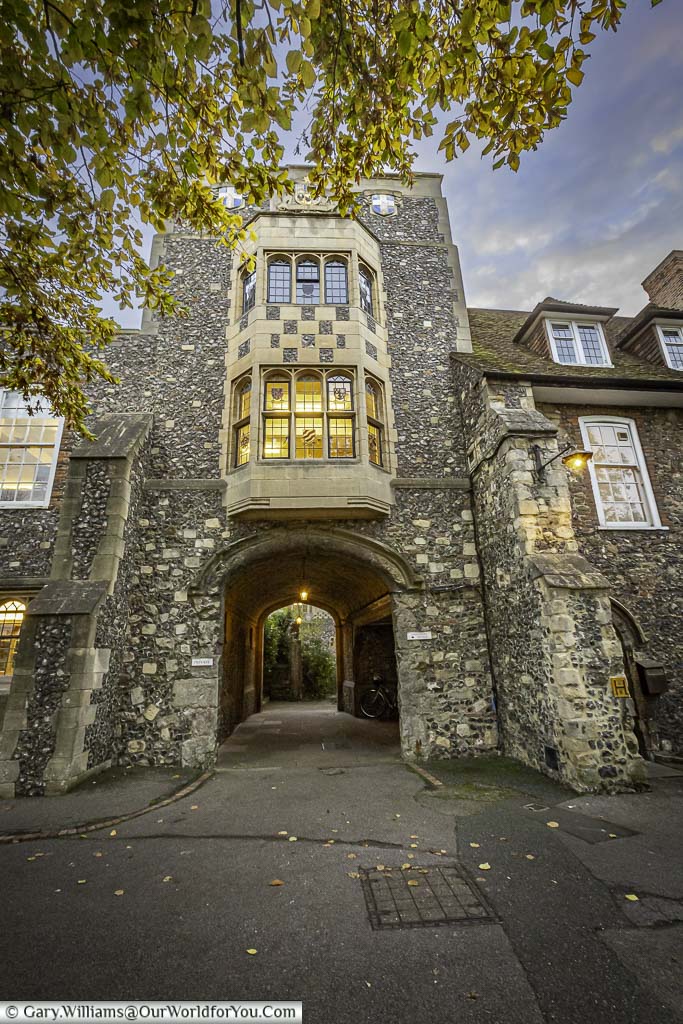
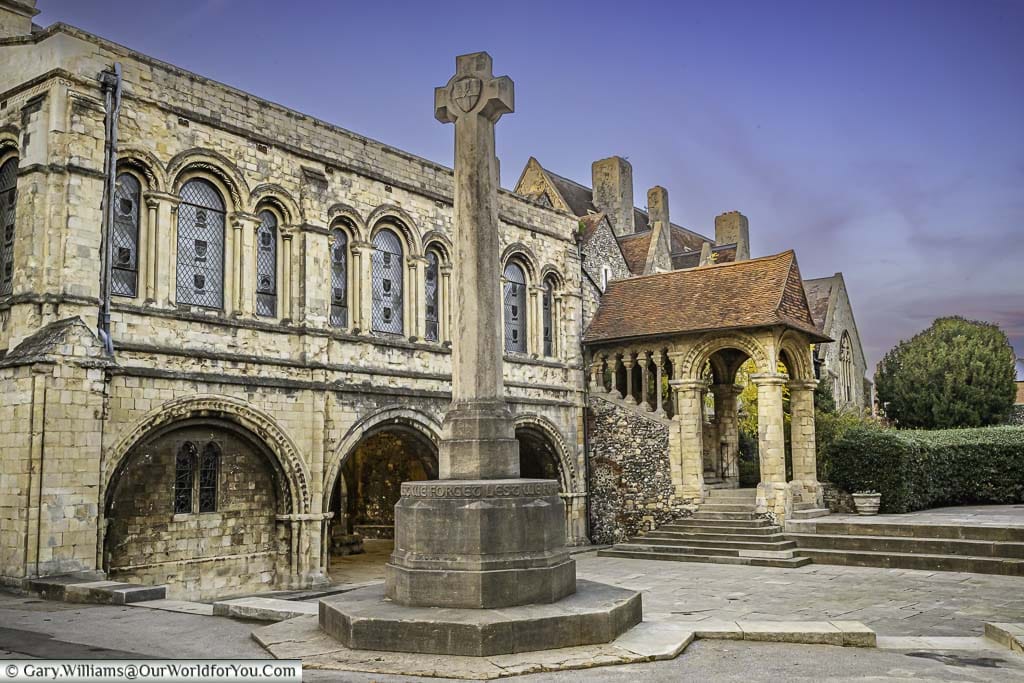
Escape for a few days
Are you looking for that ‘perfick’ holiday hideaway to relax in while you discover the Garden of England?
After a day exploring the Kent coast and its many historic castles enjoy one of the handpicked properties and unique retreats at Holiday Cottages.
The King’s Mile
The quirky streets of Canterbury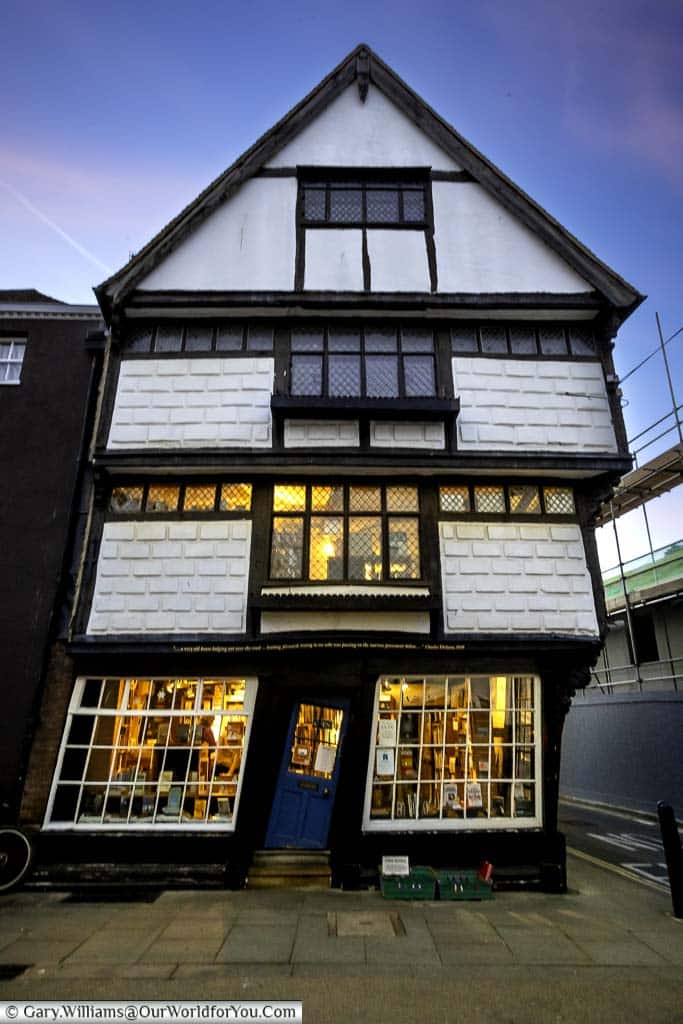
There are some charming, unique and interesting shops around here. However, the building that I’m sure will catch your eye is the quaint 17th-century timber-framed bookshop, on the corner of King Street and Palace Street; yes, it really is tilting.
Strolling further back towards Canterbury Cathedral, you’ll pass more independent restaurants and some quirky stores.
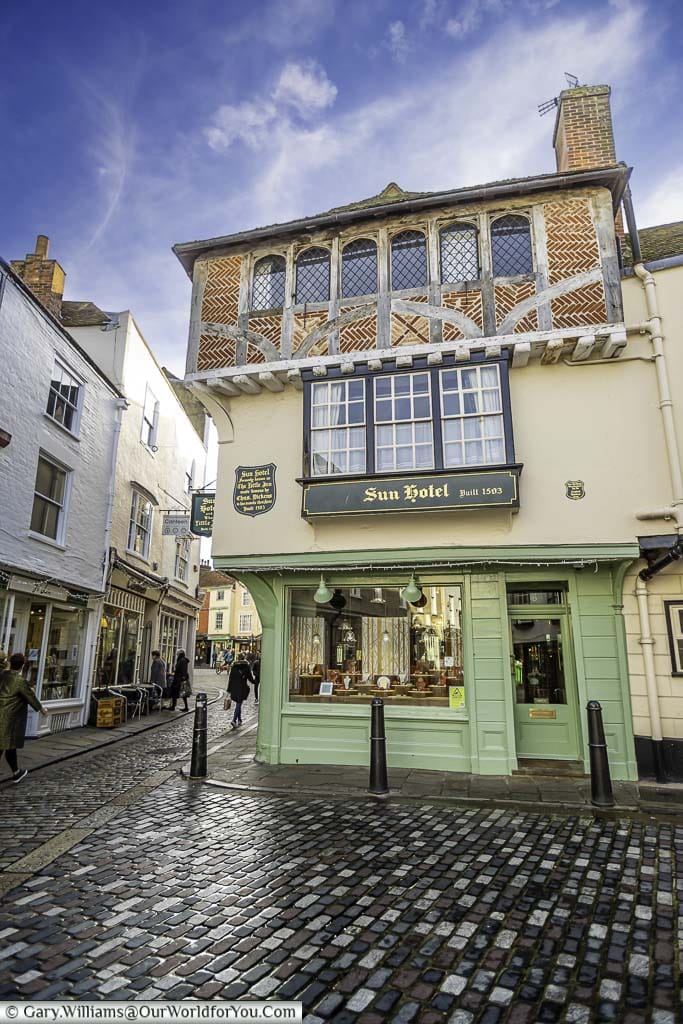
Refreshments en-route
The self-guided walk is around 2.7miles or 4.4kms, so you may fancy a refreshment or two on the way. Worry not, there are plenty of cafés, tea rooms, pubs and restaurants en-route.
The Corner House, located within a 16th Century Coach House serves delicious dishes using locally sourced Kent produce.
Canterbury's historic lanes
Beaney House is waiting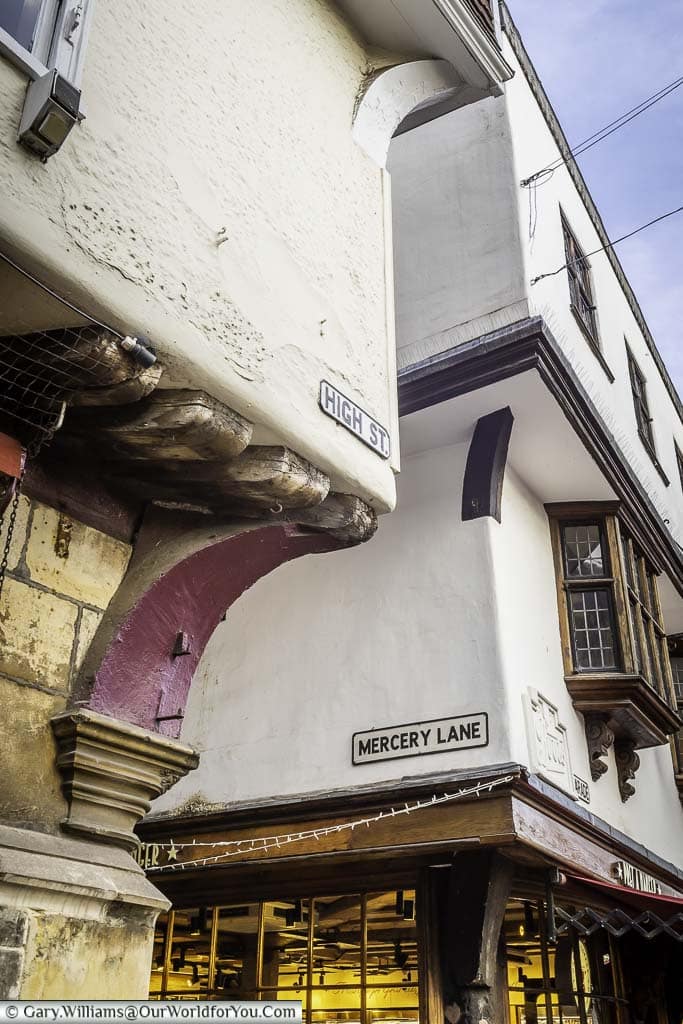
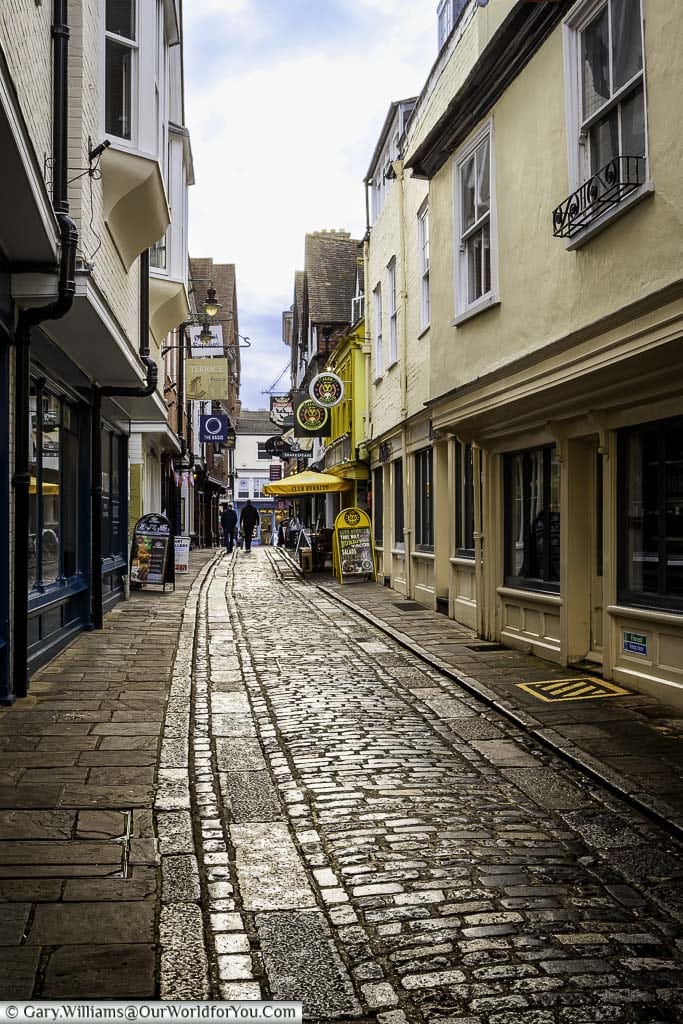
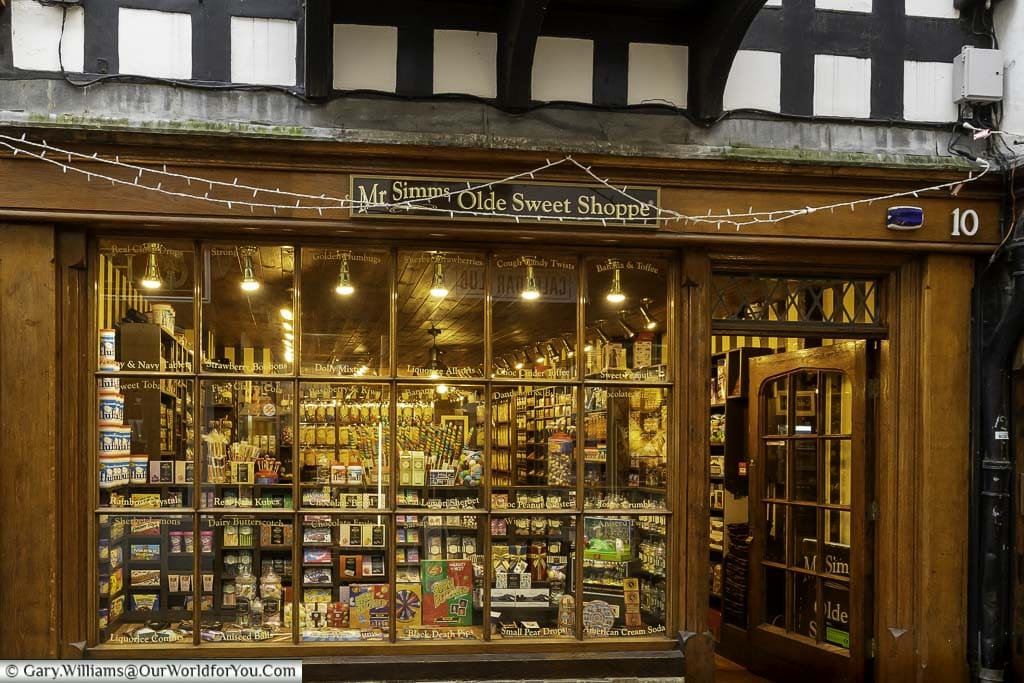
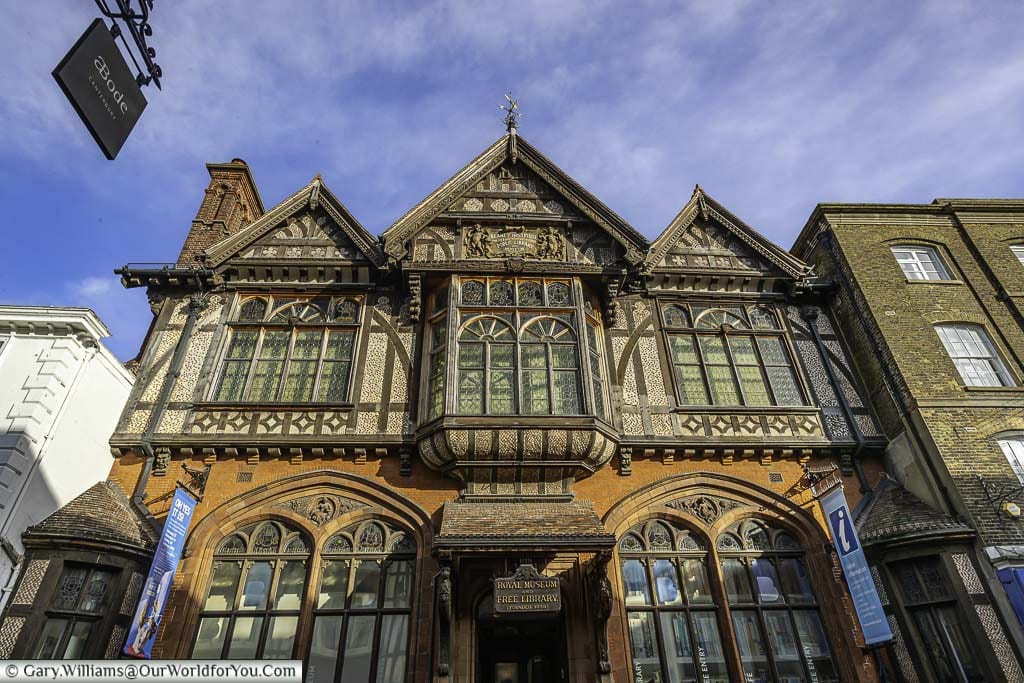
More Information
Canterbury's Huguenots
The French-speaking silk weaversStrolling through Canterbury High Street, you’ll then pass the attractive bronze statue of Geoffrey Chaucer, The Canterbury Tales monument.
You’re now reaching the final stop of your circular route as you arrive at the Huguenot weavers' houses by the bridge over the Great Stour river.
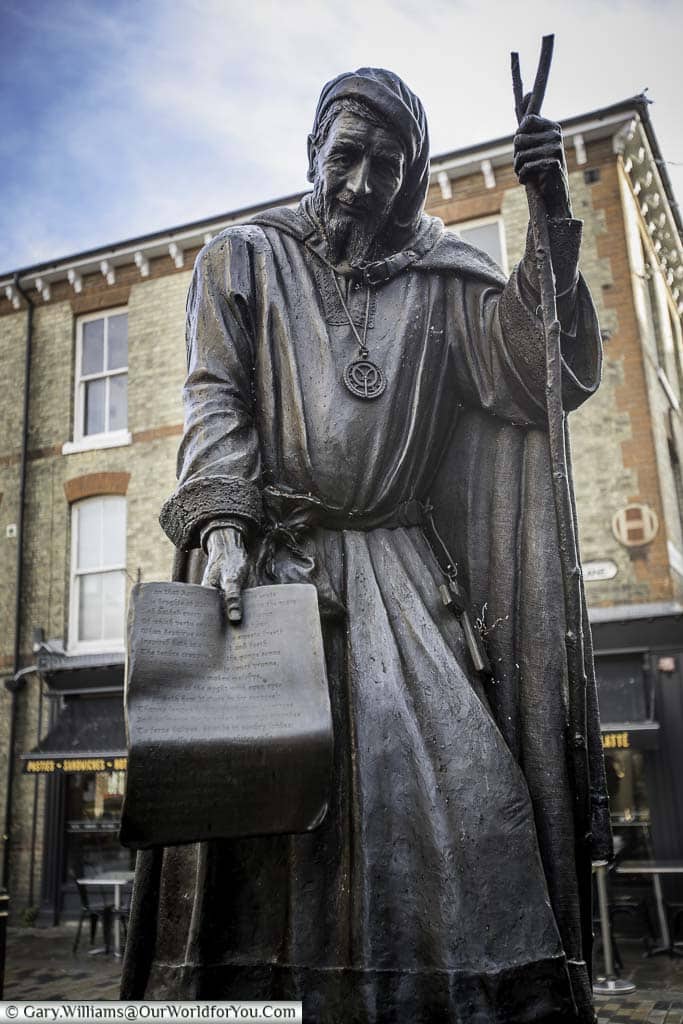
During the 17th century, 200,000 French-speaking Protestant Huguenots arrived in the UK fleeing persecution from Catholic France. The Huguenots introduced silk weaving to the City and soon made up 2,000 of Canterbury’s 5,000 population.
The Huguenots are still remembered today in Canterbury Cathedral. Their descendants’ worship, in French, every Sunday at 3pm in the Huguenot Chapel in the Cathedral’s Crypt.
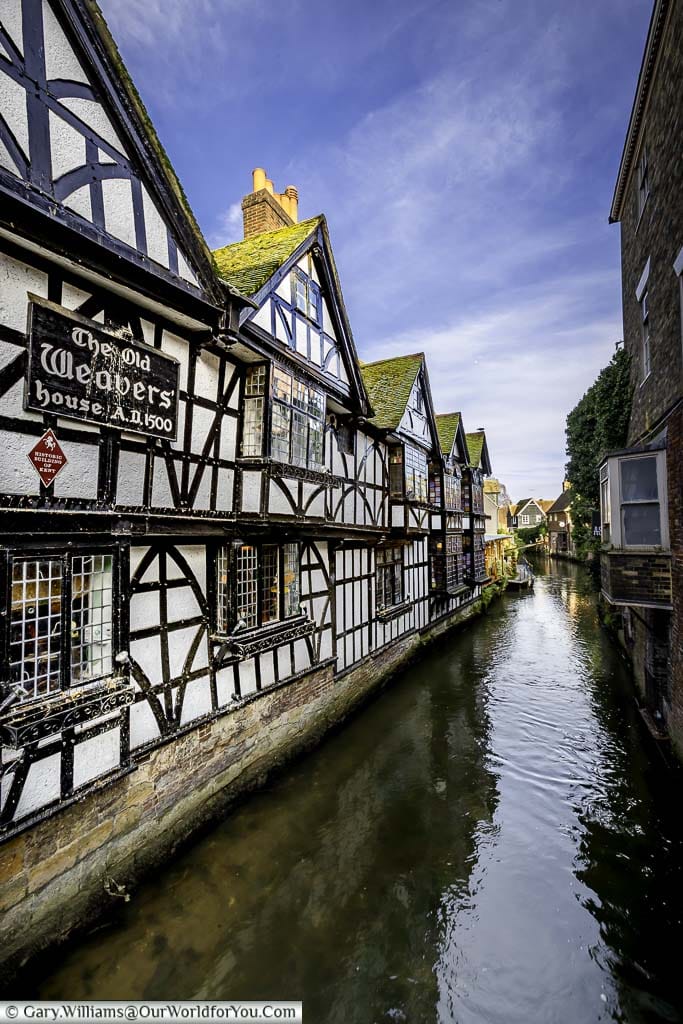
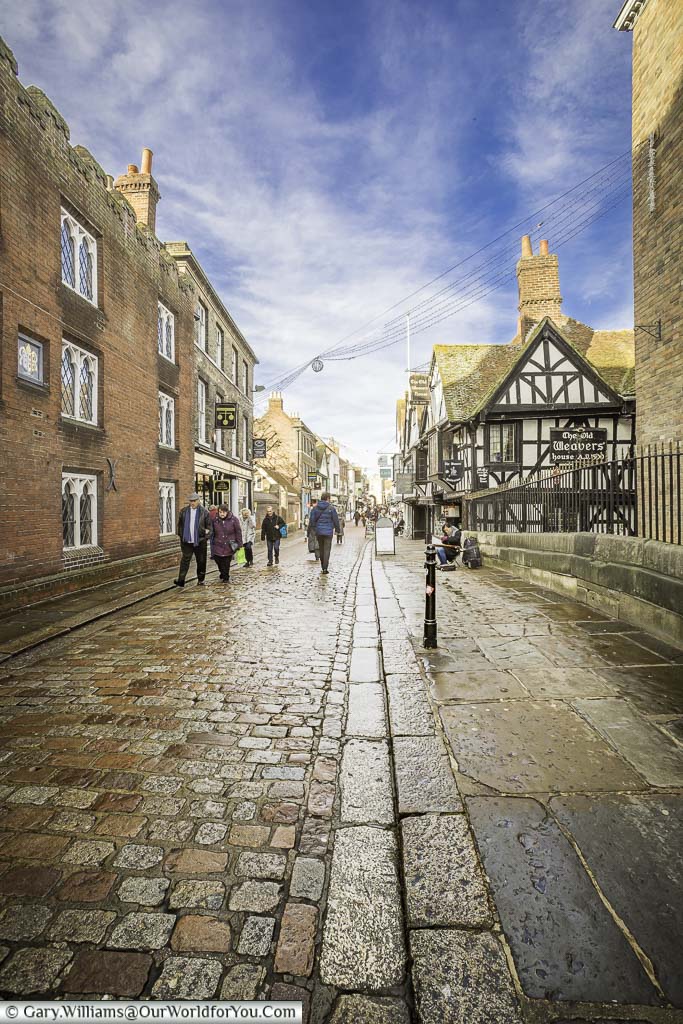
Why not?
* This post may contain links to affiliated sites where we earn a small commission at no additional charge to you.

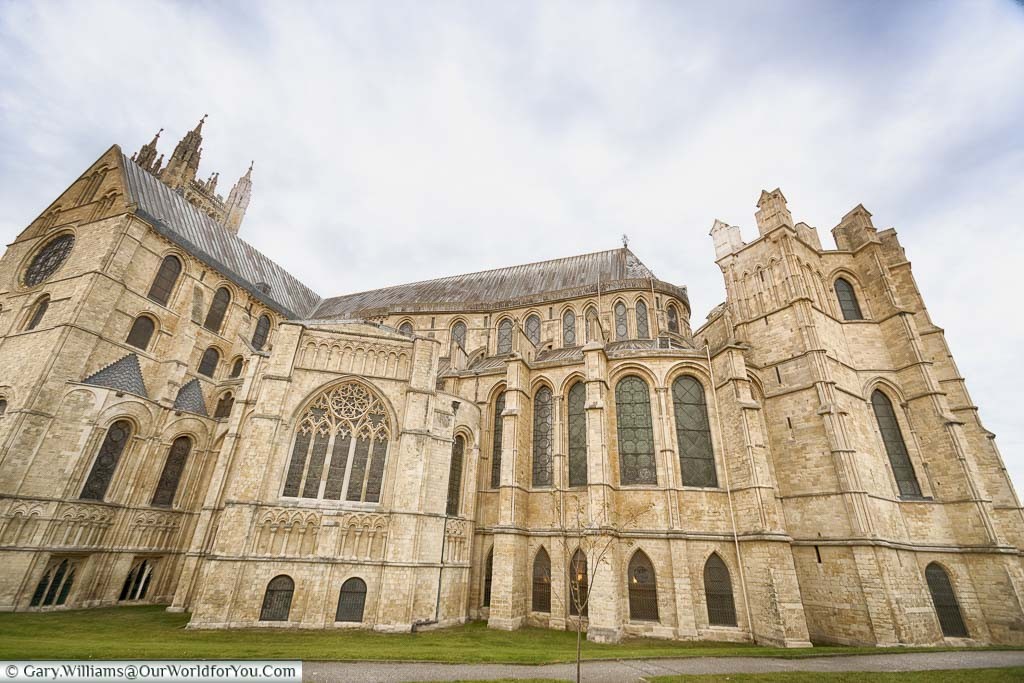
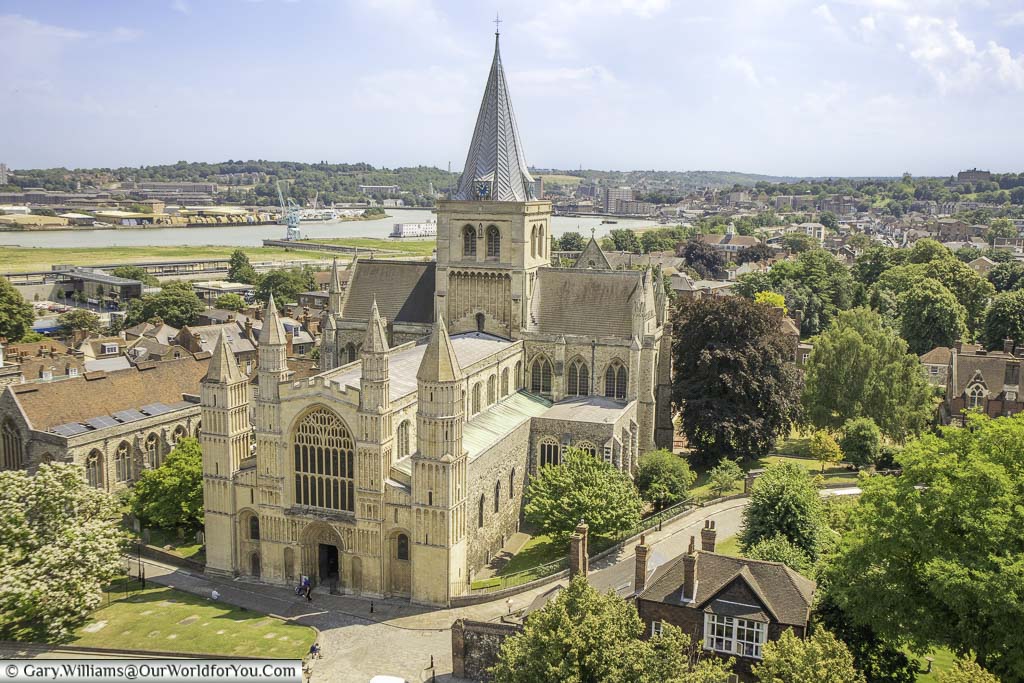
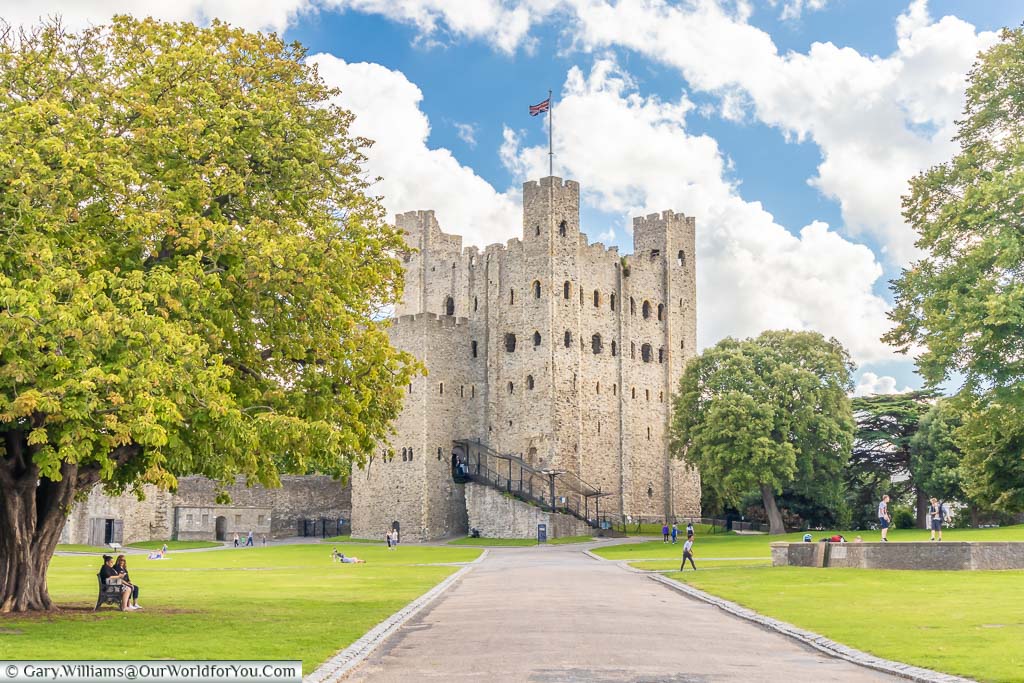
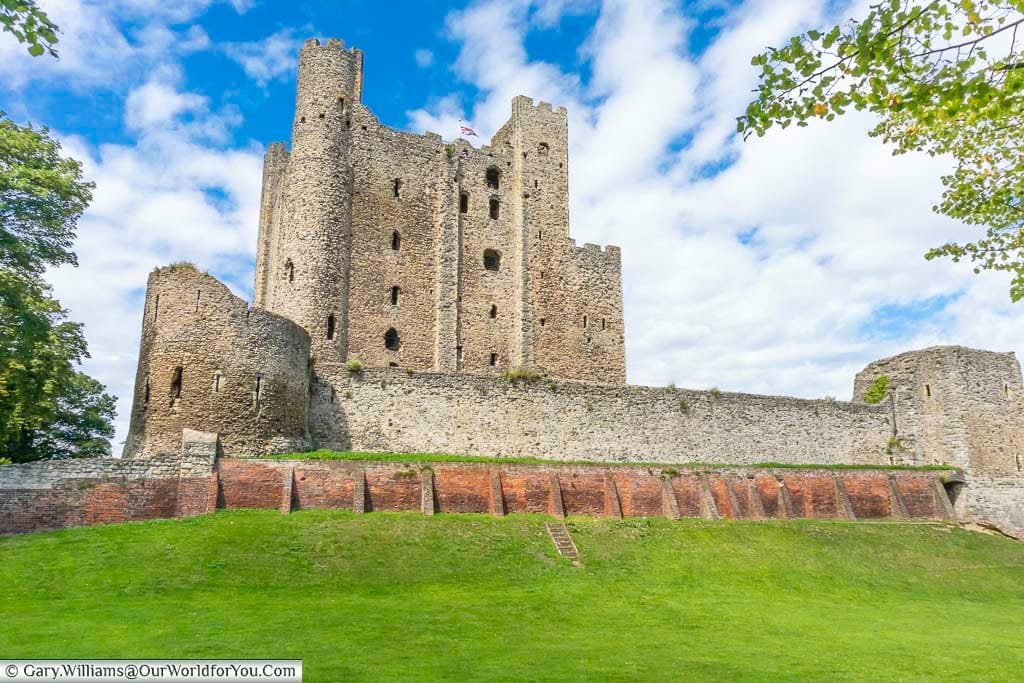

Pinned for future travel planning! I love this Roman architecture. A friend of mine is walking to Canterbury from Winchester Cathedral (!) this spring, so I was especially interested to read about Canterbury — though I would take the train there!
Yes Canterbury is a lovely city, it’s full of so much history. I particularly enjoy it around the King’s Mile.
Your friend must be walking the Pilgrim’s Way, is that correct? We live around 40 miles from Canterbury and the Pilgrim’s Way passes by the end of our village.
Let’s hope the weather holds out for them and they enjoy the English countryside.
Enjoyed reading your post. Have to admit I had to google motte and bailey. My wife and I have fond memories of Canterbury, as this is where I proposed to her, ten years ago. We like to go back every now and then. Last time we did, we combined it with the Grayson exhibition and a blog post about it. Keep up the good work.
Cheers Mr B – Congrats on the 10 years. I’ll check-out your post. Both our parents now live on the Kent coast just north of Canterbury, so we get to pop in often – normally to the Marlow Theatre, or maybe just for a good old wander.
Anyway happy travels
Gary